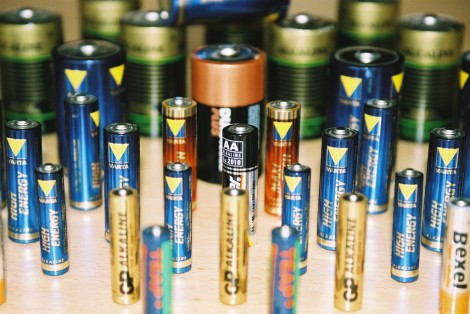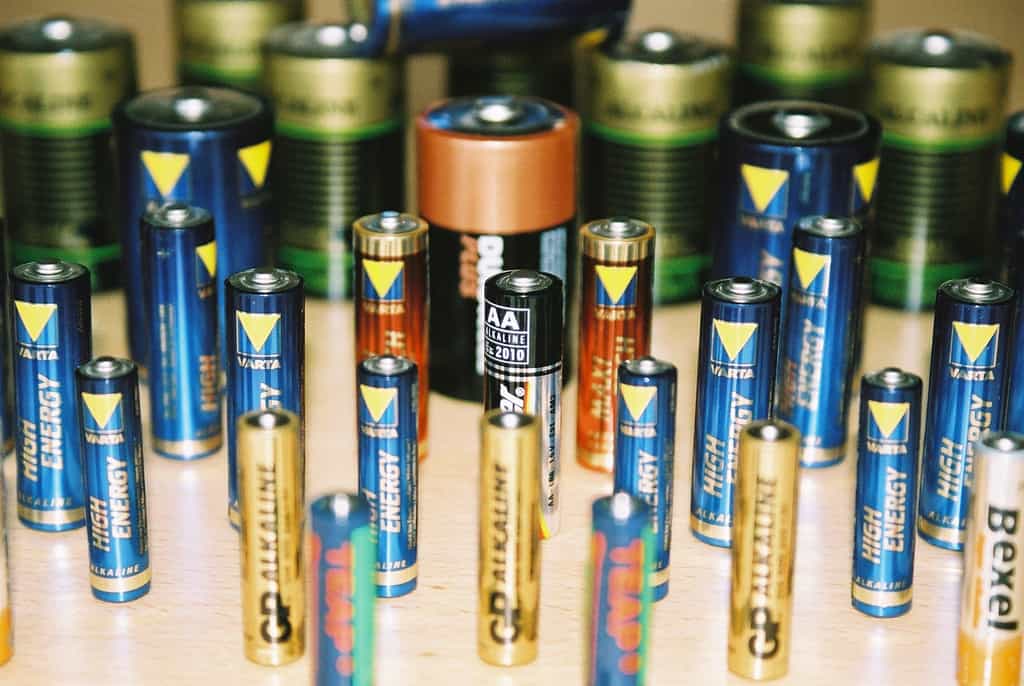If you don’t find bulky batteries appealing, you might be in luck. Researchers at U of T have created a solid electrochemical capacitor, an energy storage device similar to the battery, that’s thin and flexible enough to be embedded into display screens or electric vehicles.
Dr. Keryn K. Lian, associate professor in the Department of Materials Science and Engineering at U of T, led the Flexible Energy and Electronics Laboratory to create a flexible solid electrochemical capacitor. The size of a quarter, the compact device can be repeatedly charged and discharged in a matter of seconds and last longer than typical rechargeable batteries. At 100 volts per second, this is the highest charge delivery rate reported to date for solid electrochemical devices.

Electrochemical capacitors might make old bulky batteries like the ones above a thing of the past TOMBLOIS/FLICKR
“A battery is like a big tank with a small faucet. It can’t dispense power quickly,” says professor Lian. Electrochemical capacitors, on the other hand, are capable of rapid, high-power delivery on demand. This is why electrochemical capacitors would be excellent energy storage devices for electric buses, which require quick bursts of energy because they constantly stop and go.
The team believes their flexible energy storage device is also ideal for the multi-billion dollar flexible electronics industry. There’s a lot of research on flexible computer displays, radio frequency identification tags, and intelligent packaging — for example, medicine bottles that show expiry dates, says professor Lian. “All of these need energy. You can’t have these things carrying a [bulky] battery. Our device is very thin; about 0.2 mm thick.”
The device stores energy in two closely spaced electrical conductors (electrodes) with opposing charges. It charges like a battery, applying voltage bias so one electrode is positive and the other is negative. An ionically conductive polymer film, known as a solid polymer electrolyte, separates the two carbon-coated stainless steel electrodes to prevent them from shorting. The polymer electrolyte and the right combination of the electrodes provide the device’s rapid charge delivery.
The scientific community has shown a strong interest in the team’s research. Han Gao, a MASc candidate and member of the FEE Lab, won first place in the student poster competition for his research on the solid electrochemical capacitor at the 2011 Fall Symposium of the Electrochemical Society, Canadian Section.
The real appeal is the energy efficiency of the device over conventional electrochemical capacitors. Han says their device is more energy efficient because it requires less packaging. Conventional electrochemical capacitors have more packaging to ensure the liquid electrolyte doesn’t leak out during usage.
The solid electrolyte used in the team’s design eliminates the potential leakage problem, which is the main selling point for their device, according to professor Lian.
The compact design also means the energy storage of the device can be increased without significantly increasing the packaging used. Individual devices are stacked together to form a more powerful multi-cell device. They are combined into one package by replacing one of the two electrodes with a separator electrode.
What’s next for the team?
So far, a single-cell device can store enough energy to power an LED and perform well under normal conditions. Han says they are now working to optimize the power performance of their device by tweaking the materials used in the electrodes. They also plan to test their device under extremely cold (-40˚C) and dry (<10% humidity) conditions. The additional tests will prepare their flexible energy storage device for a wide range of future applications.


